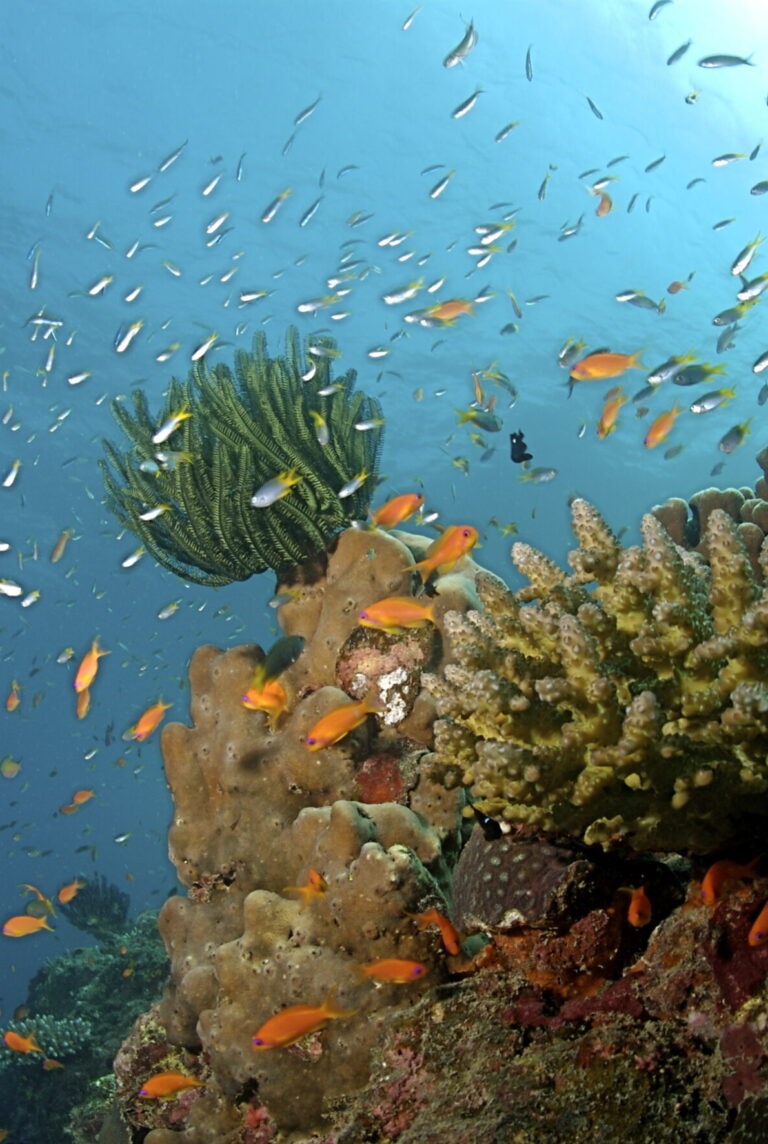NOAA Coral Reef Watch – Successfully Predicting and Monitoring Coral Reef Bleaching Worldwide Since 1997

Coral reefs are some of the most diverse ecosystems in the world. They provide significant ecological, economic, and societal benefits, from supporting marine species to protecting our coastlines to generating $9.8 trillion per year globally and $3.4 billion in the United States alone.
But global threats like climate change are putting corals and other reef organisms at risk. Warming ocean temperatures create heat stress for corals, causing them to eject the microscopic algae that give corals their vibrant colors and provide them with nutrients. This process, dubbed coral bleaching, severely weakens corals and makes them more vulnerable to disease, other stressors, and death.
“Mass coral bleaching has become one of the most visible marine ecological impacts of global warming and rising ocean temperatures,” says Jacqueline De La Cour, ESSIC Senior Faculty Specialist.
De La Cour, along with Visiting Research Scientist Dr. Gang Liu and Faculty Specialist Erick Geiger*, are members of NOAA’s Coral Reef Watch (CRW), a program now supported by the ESSIC-administered Cooperative Institute for Climate and Satellites (CICS).
Since 1997, CRW has been identifying potential areas of mass bleaching on tropical, shallow water coral reefs worldwide using satellite-based, near real-time heat stress monitoring products. CRW’s satellite monitoring has successfully identified all three recent global coral bleaching events (1998, 2010, and 2014-2017) as well as other local and regional-scale coral bleaching events.
In 2012, CRW added short-term forecasting to its portfolio, launching its probabilistic, global Four-Month Coral Bleaching Outlook system. The Outlook product is part of the world’s only global early warning system of coral reef physical and chemical environmental changes.
The Outlook uses daily sea surface temperature forecasts derived from NOAA’s Climate Forecast System (now CFSv2), an ocean-land-atmosphere seasonal climate forecast modeling system. The Outlook can predict coral bleaching heat stress up to four months in advance.
This technology can help resource managers, scientists, decision makers, and the public monitor climate change impacts to reefs, assess when reefs are vulnerable or resilient to climate change, and implement timely, effective, and protective measures.
“June 2014-May 2017 brought the longest, most widespread and probably most damaging global bleaching event on record. NOAA Coral Reef Watch’s satellite- and model-based decision support products proved critical in helping users worldwide prepare for and respond to bleaching – including actions to reduce severe marine heatwave damage,” notes De La Cour.
In addition to predicting and monitoring in near real-time coral bleaching heat stress globally, CRW is working on the development and implementation of a simplified Early Warning System (EWS) for coastal flooding of coral reef-lined coasts worldwide. CRW is currently developing methodologies to derive accurate sea surface height and significant wave height measurements outside of coral reefs near and along all Pacific islands and coastlines, for implementation in near real-time.
“NOAA Coral Reef Watch is continuously developing, improving, delivering, and maintaining the user-requested tools in its world-renowned decision support system for coral reef management,” concludes De La Cour.
For more information on the NOAA Coral Reef Watch, visit their website here.
*Jacqueline De La Cour, Gang Liu, and Erick Geiger are affiliated with the Cooperative Institute for Climate and Satellites-Maryland (CICS-MD), Earth System Science Interdisciplinary Center, University of Maryland, and the NOAA Center for Weather and Climate Prediction (NCWCP).






